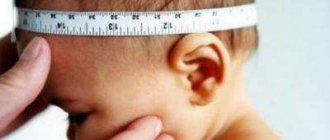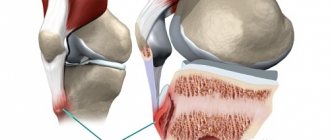Both of my nephews were 152 cm at the age of 12. The eldest has already grown up a long time ago, he is 27 - his height is 176 cm. Their mother is 154. Even his brother’s height is 183.
And my friend’s son was exactly 170 at 12, they are all tall.
13 years old, 178 cm, leg 45 size
So what?? Why did you bring up the topic?!
Share with friends
Celebrities trending
Our website uses cookies to improve your experience and make the site more efficient. Disabling cookies may cause problems with the site. By continuing to use the site, you agree to our use of cookies. It's clear
Adolescence is a wonderful and challenging time. Puberty is accompanied by serious physiological changes in the body.
Parents are advised to regularly monitor the process and learn to correctly assess the changes taking place.
Historical background (WHO tables and graphs)
Since the late 1970s, reference development indicators adopted by the National Center for Health Statistics/World Health Organization (NCHS/WHO) have been used.
In 1993-1994, WHO concluded that the reference indicators used do not adequately reflect early child development and have many shortcomings. The shortcomings were very serious and this interfered with the optimal management of feeding of young children. It was necessary to explore new norms of development.
From 1997 to 2003, WHO conducted large developmental studies to create new curves for assessing infant and young child development. The study was called the Multicenter Growth Reference Study (MGRS). The total number of children studied was 8440. Some of them were excluded from the study due to illness or other complications. Studies were conducted on children in Brazil, Ghana, India, Norway, Oman, and the USA. In this way, it was possible to collect statistical data from countries with different climates, cultures and other characteristics.
During the study, the Standard Child Development Indicators were adopted:
- body length (height) - age
- body mass (weight) - age
- body weight - body length
- body weight - height
- body mass index (BMI) - age
Here it is worth paying attention to the differences in the concepts of body length and height. Body length was measured in children aged from birth to 2 years in a supine position
Height was measured in children aged 2 to 5 years in a standing position. The final statistics for children aged 18 to 30 months take both values into account. In our tables and graphs, we use the word “growth” for simplicity.
Height
Short stature for a child under 5 years of age may mean a developmental delay, indicate the presence of certain diseases, and indicate the child’s prematurity, which has not been compensated over time. Tall height is usually not a problem, but being too tall may indicate the presence of an endocrine disorder (a similar suspicion arises if the parents of a child who is too tall are of average or below average height).
Height rating scale:
- Too low – medical help is required;
- Low – it is advisable to consult a doctor;
- Below average is a variant of the norm;
- Average is normal;
- Above average is a variant of the norm;
- High;
- Too tall.
Detailed assessment, recommendations, problems
The issues of harmonious formation of the future of a man and a woman lie entirely on the shoulders of the parents. A teenager's assessment of their appearance is not always objective, and often leads to far-fetched problems and complexes.
This period requires a more attentive and sensitive attitude towards children from adults. It is advisable to control the changing parameters, and discuss the reasons and ways to resolve the situation together with the child.
Short stature or, conversely, too much body length may be predisposing factors transmitted from close relatives. In this case, therapy is not carried out. In the absence of genetic causes, consultation with a doctor is required. You should not draw conclusions on your own and take drastic measures.
In order to minimize the risks of developmental disorders, it is important to adhere to a number of recommendations:
- establish a complete, balanced diet;
- exclude the use of low-carbohydrate, strict, express diets, only restrictions on fatty and high-calorie foods are possible;
- presence of regular physical activity;
- compliance with the prescribed time for sleep and rest;
- alcohol, tobacco, narcotic psychotropic substances are prohibited.
Weight estimation using body mass index
It is possible to determine the proportionality of development using the body mass index formula. In order to calculate BMI, you need to divide your initial body weight by your height (in m) squared.
For example, a child’s height is 143 cm - that’s 1.43 m, weight - 47 kg.
Let's do the calculation: 47 / (1.43*1.43) =22.9
Table No. 7 BMI assessment
| Coefficient | Correspondence of body weight to height | Recommendations |
(first degree obesity)
Growth Estimate
It is recommended to measure the child's height monthly. When comparing the table value with the data on the measuring ruler, correct interpretation of the results is important.
Table No. 8 Assessment of growth indicators
| Up to 16.5 | Severe exhaustion | If there is a significant weight deficit, an examination is required. |
| 16,6-18,5 | Minor shortage | Adjust your diet, add a vitamin complex. |
| 18,6-25 | Norm | Maintain the regime. |
| 25-30 | Slightly elevated | Reduce consumption of high-carbohydrate foods, increase daily activity: exercise, walking, slow running. |
| 30-35 | Overweight | |
| Corrections as prescribed by a doctor. | ||
| 35-40 | Second degree obesity | |
| From 40 | Severe obesity (3rd degree) |
| Very low | A serious sign of delayed physical development. The child must undergo examination. |
| Short | May indicate a lag. Often found among premature babies. |
| Below the average | A slight shortage, but within normal limits. |
| Average | Norm. Typical for most teenagers. |
| Above average | There may be deviations or a hereditary trait. |
| Very tall | Indicates endocrine disorders. Contact your doctor. |
Height and weight from 11 to 18 years
At this age, the spectrum of norms is very wide for both boys and girls. The time of puberty in girls is characterized by the appearance of rounded shapes, when at the same time boys are still short and small. It is necessary to psychologically prepare the child for the changes occurring in his body. At this time, girls are strictly prohibited from dieting.
The weight of girls is from 11 to 18 years. WHO data. Table.
| Age | Low weight (kg) | Weight is below average. (kg) | Average weight (kg) | Weight above average (kg) | Heavy weight (kg) | Too much weight (kg) |
| 11 years | 25-28 | 27,7-30,6 | 30,7-39 | 39-44,6 | 44,6-55,3 | |
| 12 years | 27,8-32 | 31,7-36 | 36-45,4 | 45,4-52 | 52-63,4 | |
| 13 years | 32-38,7 | 38,6-43 | 43-52,5 | 52,5-59 | 59-69 | |
| 14 years | 37,5-44 | 43,8-48,2 | 48,2-58 | 58-64 | 64-72,2 | |
| 15 years | 42-47 | 46,8-50,6 | 50,6-60,5 | 60,4-66,5 | 66,6-75 | |
| 16 years | 45,2-48,5 | 48,4-52 | 51,8-61,3 | 61,4-67,6 | 67,5-75,6 | |
| 17-18 years old | 46,3-49,2 | 53-62 | 49,2-53 | 61,9-68 | 68-76 |
The height of girls is from 11 to 18 years. WHO data. Table.
| Age | Low height (m) | Below average height (m) | Average height (m) | Above average height (m) | Tall (m) | Very tall (m) |
| 11 years | 1,32-1,36 | 1,36-1,40 | 1,40-1,49 | 1,49-1,53 | 1,53-1,57 | |
| 12 years | 1,37-1,42 | 1,42-1,46 | 1,46-1.54 | 1,54-1,59 | 1,59-1,63 | |
| 13 years | 1,43-1,48 | 1,48-1,52 | 1,52-1,60 | 1,60-1,67 | 1,64-1,68 | |
| 14 years | 1,48-1,52 | 1,52-1,55 | 1,55-1,63 | 1,63-1,67 | 1,67-1,71 | |
| 15 years | 1,51-1,54 | 1,54-1,57 | 1,57-1,66 | 1.66-1,69 | 1,69-1,73 | |
| 16 years | 1,48-1,52 | 1,55-1,58 | 1,58-1,67 | 1,67-1,70 | 1,70-1,74 | |
| 17-18 years old | 1,52-1,56 | 1,56-1,58 | 1,58-1,67 | 1,67-1,70 | 1,70-1,74 |
The weight of boys is from 11 to 18 years. WHO data. Table.
| Age | Low weight (kg) | Weight is below average. (kg) | Average weight (kg) | Weight above average (kg) | Heavy weight (kg) | Too much weight (kg) |
| 11 years | 26-28 | 28-31 | 31-39,9 | 39,9-44,6 | 44,9-51,5 | |
| 12 years | 28,2-30,7 | 30,7-34,4 | 34,4-45,1 | 45,1-50,6 | 50,6-58,7 | |
| 13 years | 30,9-33,8 | 33,8-38 | 48-50,6 | 50,6-56,8 | 56,8-66 | |
| 14 years | 34,3-38 | 38-42,8 | 42,8-56,6 | 56,6-63,4 | 63,4-73,2 | |
| 15 years | 38,7-43 | 43-48,3 | 48,3-62,8 | 62,8-70 | 70-80,1 | |
| 16 years | 44-48,3 | 48,3-54 | 54-69,6 | 69,6-76,5 | 66,5-84,7 | |
| 17-18 years old | 49,3-54,6 | 54,6-59,8 | 59,8-74 | 74-80,1 | 80,1-87,8 |
The height of boys is from 11 to 18 years. WHO data. Table.
| Age | Low height (m) | Below average height (m) | Average height (m) | Above average height (m) | Tall (m) | Very tall (m) |
| 11 years | 1,31-1,34 | 1,34-1,38 | 1,38-1,48 | 1,48-1,53 | 1,53-1,56 | |
| 12 years | 1,36-1,40 | 1,40-1,43 | 1,43-1.54 | 1,54-1,59 | 1,59-1,63 | |
| 13 years | 1,42-1,45 | 1,45-1,50 | 1,50-1,60 | 1,60-1,66 | 1,66-1,70 | |
| 14 years | 1,48-1,52 | 1,52-1,56 | 1,56-1,67 | 1,67-1,72 | 1,72-1,76 | |
| 15 years | 1,54-1,58 | 1,58-1,62 | 1,62-1,73 | 1.73-1,77 | 1,77-1,81 | |
| 16 years | 1,59-1,63 | 1,63-1,67 | 1,67-1,78 | 1,78-1,82 | 1,82-1,86 | |
| 17-18 years old | 1,63-1,66 | 1,66-1,71 | 1,71-1,81 | 1,81-1,86 | 1,86-1,88 |
Child's height by age
Every parent from time to time has a question about how tall a child should be by age. We all know that there are certain standards developed on the basis of average indicators. If you use a stadiometer to note how your baby is growing, this allows you to observe the relationship between the child’s height and age in a very informative and convenient way.
Loving mothers and fathers should know the child’s growth standards by age. This will allow you to notice a problem in time, for example, too slow or too fast an increase in indicators. If any problem is identified, you should contact your pediatrician.
The average height of children by age depends on heredity, lifestyle, nutrition, level of physical activity, duration of daily sleep, the presence of positive emotions, as well as on the general state of health and previous diseases. Kids should eat as many vegetables, fruits, protein and calcium (found in dairy and fermented milk products) as possible.
It is important that they often walk outdoors
Child's age-weight-height table"
Below is a table showing averages by gender. It covers ages from 0 to 14 years, when children grow the fastest.
| Age | Boys | Girls | ||
| (years) | Height (cm) | Weight, kg) | Height (cm) | Weight, kg) |
| 50 | 3,6 | 49 | 3,4 | |
| 0,5 | 68 | 7,9 | 66 | 7,2 |
| 1 | 76 | 10,3 | 75 | 9,5 |
| 1,5 | 82 | 11,7 | 80 | 11 |
| 2 | 89 | 12,6 | 86 | 12,1 |
| 2,5 | 92 | 13,3 | 91 | 12,9 |
| 3 | 98 | 14,3 | 95 | 14 |
| 4 | 102 | 16,3 | 100 | 15,9 |
| 5 | 110 | 18,6 | 109 | 17,9 |
| 6 | 115 | 20,9 | 115 | 20,2 |
| 7 | 123 | 23 | 123 | 22,7 |
| 8 | 129 | 25,7 | 129 | 25,7 |
| 9 | 136 | 28,5 | 136 | 29 |
| 10 | 140 | 31,9 | 140 | 32,9 |
| 11 | 143 | 35,9 | 144 | 37 |
| 12 | 150 | 40,6 | 152 | 41,7 |
| 13 | 156 | 45,8 | 156 | 45,7 |
| 14 | 162 | 51,1 | 160 | 49,4 |
Matching the height and age of the child
Cases of disturbance in the way a boy or girl grows require finding out the cause and solving the problem. Often this can be due to hormonal imbalance, insufficient or excessive nutrition, and poor lifestyle.
In the case of dwarfism, there is a delay in physical development. The first signs can be noticed as early as 2-3 years, when the increase in indicators differs from the norm by more than 50%. In the case of gigantism, as a rule, there is excess production of growth hormone, due to which the baby is ahead of normal development. In both cases, you need to pass the appropriate tests, undergo magnetic resonance imaging, computed tomography of the brain.
womanadvice.ru
Height-to-weight ratio of schoolchildren
The most noticeable changes in height and weight occur during school years. Growth proceeds intensively, but extremely unevenly. In addition, the child’s muscles improve. All this is reflected in indicators of physical development and health. An impressive jump occurs between the ages of 11 and 16. However, in some cases, dramatic changes occur at 13-15 years of age. Basically, the weight-to-height ratio at this stage of growing up is abnormal. However, this is not dangerous and is simply explainable - the muscles simply do not have time to gain the necessary mass. Hence the familiar awkwardness of teenagers. This condition does not require correction by physical activity or diet.
Correspondence to the height, weight and age of a girl under 17 years old
Correspondence of height, weight and age of a boy under 17 years old
Several factors that should not be forgotten have a strong influence on the growth of children:
Balanced diet (both quality and quantity of food are important). Maintaining a healthy rest and work schedule. Availability and regularity of sports activities. The influence of ecology and heredity.
In order to keep the entire student in normal condition, sports are a must. If you do not develop muscle mass, the bulk of your weight will come from body fat. In this case, the child will be chubby. Interestingly, during adolescence, parents are still more likely to encounter excessive thinness than overweight. This is due to the inability of the muscular system to “keep up” with the rate of growth increase.
https://youtube.com/watch?v=TEFuPsF6HGk
Indicators of weight and height of a child up to one year
From the first days of each month, the baby on average increases body weight by 500-800 g, height increases by 3-5 cm. This progression is observed up to 6-7 months. In subsequent months, this growth rate slows down. This is due to the increased motor activity of the child, who begins to sit, then crawl and rise to his feet, leaning on objects.
By the age of one year, on average, a newborn grows one and a half times, its weight increases almost three times. These general indicators are not a sample, because each individual child’s body develops according to its own individual program. In addition, small errors cannot be an indicator of anomalies or pathology.
In order not to “overlook” the fact that the baby has begun to experience some unwanted or suspicious changes in development, you need to visit the pediatrician who is seeing the baby monthly. There he will have his weight and height professionally measured. After the examination, the doctor must check the indicators with the standard charts of weight and height and identify their correspondence or difference. Based on all observations, he will draw a conclusion about the physical development and health status of the baby. If any irregularities are observed in the infant’s anthropometric data, he will inform the parents about this.
On a note. If the baby eats well, is not capricious, but is behind in height or weight, or, conversely, quickly gains weight or height, this does not always indicate an anomaly.
Normal physical development of a child
Factors on which the physical development of the baby depends:
- gender of the child;
- weight and height at birth;
- past illnesses of the mother or baby;
- the presence or absence of congenital diseases or pathologies;
- breast or bottle feeding;
- genetic characteristics of the physical characteristics of the mother and father (height, weight, etc.);
- temporary difficulties (teeth cutting, loss of appetite, diarrhea, dehydration).
How to use norm tables to assess the physical development of children under one year old and preschoolers?
Features of the compilation of WHO tables released in 2006:
- Initially, monitoring was carried out in different countries and clinics around the world. Based on such global studies, numerical indicators of the normal development of each child were derived, regardless of place of residence.
- The fundamental difference between the new system of assessing physical development and the outdated one is such an important indicator as breastfeeding. This is the type of food that is considered normal for babies. Previous “reference” figures were overestimated because they were focused on formula-fed infants. The new WHO standards are applicable in any region, regardless of race and national characteristics of medicine in a particular country.
- For five years, scientists and doctors, nutritionists and immunologists, nutritionists and children's rights advocates conducted research, and the resulting graphs and tables became a breakthrough in the children's healthcare system.
How to use WHO tables to assess child development?
WHO tables (used by Russian doctors) are divided into columns. Each contains numerical indicators that determine how much the child’s development is in the generally accepted norm. To assess whether a child is developing correctly, you need to find in the WHO table in the first column a value corresponding to the child’s age or close to it, and then in the same row in other columns find an indicator close to the value of the body parameter measured in the child.
- The indicators in the middle column and in the adjacent columns with values above and below the average are considered normal. If the parents' measurements are identical to those in the middle columns, there is nothing to worry about.
- The indicators of the child’s physical development that are in the outer columns of the table with low/very low/high/very high values should alert parents and encourage them to contact a pediatrician.
How to use the domestic centile table to assess chest circumference in children?
The centile graph-table is easy to use and understandable to ordinary average parents. Since centiles (or otherwise percentages) are indicated in average values, there is no need to panic if the child’s data is within the middle two columns. Below we will consider a method for assessing a child’s development using a centile table with chest circumference standards.
- To determine whether a child is developing normally based on the size of the chest, in the leftmost column of the table, find the age corresponding to the age of the baby. If the baby is 3 months and 6 days old, then we are looking for the norm for a three-month-old baby. If the baby’s real age is 3 months and 20 days, then we look for the corresponding indicators in the “4 months” line.
- The top line is graduated by centiles (percentages) - 3, 10, 25, 75, 90, 97. Having measured the chest circumference, check the data obtained with the average normal indicator in the corresponding line.
- If the baby's chest circumference falls between the 25th and 75th centiles, then this is great and there is no reason to worry.
- If the child's chest circumference corresponds to the value in the column 10 or 90, then this indicates a possible emerging imbalance in development.
- If the child’s chest circumference corresponds to the values in the column with the 3rd or 97th centile, then this is a reason to consult a pediatrician or neurologist.
An important factor is the consistency of the indicators of all tables with each other. For example, in a small, slender child, even an indicator of the 3rd centile can only indicate his asthenic build, and not the development of pathologies in the body. Be sure to check whether your height corresponds to your age, your weight to your height, or your head and chest measurements to your age.
Proper nutrition and exercise
Weight and volume are not the same thing. Muscle weighs 4 times more than fat for the same volume. And even if your body weight is normal or below normal, but your body looks plump, it means there is a small percentage of muscle in the body compared to the percentage of fat. The same is true if your weight is below normal, but your body looks flabby. In order to build muscle mass, you need to eat right and exercise. And it will even be useful for men who do not have extra pounds.
Proper nutrition will help bring the body back to normal
It is only important to follow the regime.
Breakfast
Breakfast is the main meal of the day that supplies the body with energy for the whole day. To get it, it is best to eat grain products (cereals). But you can make breakfast using the following methods:
- Porridge (buckwheat, oatmeal or rolled oats without additives, pearl barley, millet, rice). Cook porridge with milk, because... more nutritional properties.
- Omelette or boiled eggs, but not for every day.
- Whole wheat bread.
- Tea, cocoa, milk.
Dinner
Lunch should contain enough protein and plant foods rich in vitamins.
- Meat (chicken breasts, turkey, pork, beef, veal). Ideal boiled or stewed.
- Dairy (cottage cheese, milk, sour cream, cheese).
- Liver, kidneys.
- Fish, preferably boiled or stewed.
- Freshly squeezed juices or compotes.
- Vegetables and fruits.
- Soups. You definitely need to eat liquid food, because... it improves metabolism.
- Whole wheat bread. But you can use regular gray or black.
Dinner
Basic foods to eat for dinner:
- Dairy (kefir, cottage cheese, milk, sour cream, cheese);
- Boiled eggs;
- Fruits or vegetables.
However, you don’t have to put yourself in strict limits; you can include your favorite sweets, baked goods, etc. in your diet.
But it is important to know when to stop! To see progress in weight and muscle mass, you need to give up the following foods:
To see progress in weight and muscle mass, you need to give up the following foods:
- Fast food. Many calories consist of fats that are not digested and are stored in subcutaneous fat. It also causes the formation of cancer cells, blood clots and blockage of blood vessels.
- Sweet drinks. These are Fanta, Pepsi, Coca-Cola, Sprite, juices, etc. Empty calories that do not give you a feeling of fullness.
- White bread. High GI content, which worsens metabolism, has a bad effect on blood sugar levels, provokes a constant feeling of hunger and activates the formation of fat deposits.
- Alcohol, including beer. Slows down metabolism, lowers testosterone. And if testosterone is low, then the muscle breakdown hormone is increased.
- Pizza. Lots of calories.
- Chips, crackers. Very harmful, plus they worsen liver function.
Physical training promotes fairly rapid weight loss and muscle gain.
It is enough to train 3-4 times a week to maintain good physical shape. You can do this both at home and in the gym.
However, you should know the main mistakes in training in order to avoid them:
- No training program.
- Incorrect exercise technique. The effectiveness of training is lost, and it can also cause harm to the body. To avoid this mistake, you need to watch training videos with exercises in advance if you are practicing at home, or, if in the gym, ask a trainer for help.
- Chasing big weights. Beginners should not take on a lot of weight right away, because... muscles can be injured.
- No warm-up. Be sure to stretch your joints and ligaments before training to avoid damaging them.
- Frequent changes to the training program. There is no need to change it every 2 weeks, once every 1.5-2 months is enough for greater efficiency.
- Too long of a workout. 1-1.5 hours of training is enough, no more is needed.
- Frequent training. For a person who is not involved in professional sports, 3-4 times a week is enough, because the muscles need to rest.
- Omissions. Lack of regularity equals no result.
What are the norms for height and weight and how to relate to them?
About nine thousand children brought up in favorable conditions took part in the WHO study. Based on the information received, graphs were drawn up that determined the norms of physical development, which show:
- absolute values under ideal conditions;
- deviations caused by diseases and other unfavorable factors;
- the relationship between body length and weight, which determines the degree of harmonious development.
This is a kind of guide for parents, helping them calculate the proportions of their child, according to available tables and formulas, and if necessary, seek advice from a pediatrician.
Which tables should we refer to - domestic pediatrics or WHO?
Until the early 90s, when measuring indicators, doctors relied on the old standards that had previously been adopted by the WHO. At this time, the World Health Organization carefully studied outdated standards and came to disappointing conclusions.
It turned out that many anthropometric standards were greatly overestimated. Based on these data, medical specialists in many countries could draw incorrect conclusions about developmental delays in children. The consequence of this was the supplementary feeding of children with formula, which as a result could provoke obesity.
In parallel with WHO standards, Russia practiced the use of domestic charts, which were compiled on the basis of statistical data in our country. The data in them turned out to be more accurate and helped to make fewer mistakes. In 1993, WHO conducted a series of statistical analyzes and updated anthropometric data for children. They set new standards that remain relevant to this day.
Development during puberty
Indicators of weight and height in children aged 11 to 17 years are characterized by a wide range of normative values. These indicators during puberty are influenced by both the individual characteristics of each individual child and genetic predisposition and heredity.
On average, girls during puberty grow up to 17-19 years old, and boys - up to 19-22 years old. At the same time, the growth of girls increases most rapidly at the age of 10-12, while the growth of boys occurs in a later period - from 13 to 16 years. Growth spurts in teenagers are explained by hormonal surges. At the same time, teenagers react very painfully to their physical parameters - small boys or girls with early rounded shapes begin to develop severe complexes
It is important to prepare the child psychologically in a timely manner for the changes that will occur in his body and explain their nature. At the same time, it is strictly forbidden to allow teenagers to follow diets that, in their opinion, will bring them closer to some desired parameters
If a teenager is underweight or overweight for unknown reasons, it is necessary to analyze his lifestyle, nutrition system and undergo a full medical examination to identify any pathologies.
WHO tables: norms of weight, height, head circumference for boys and girls up to one year
Using the tables below, you can check how the head size, weight and height of babies should normally change in the first year of their life. The rates for boys and girls are different. To use the tables, you must first sequentially measure the circumference of the head, chest, height of the baby with a centimeter tape, and also weigh the child. All received data is recorded and the baby’s development is assessed using tables.
How to correctly measure the head circumference, chest circumference, height, weight of a child?
It is not at all difficult to make correct measurements to assess the physical development of a baby. The main thing is to take into account several nuances:
- A measuring tape should be purchased specifically for these purposes; if necessary, it should be taken to a doctor’s appointment so that there are no significant discrepancies in the readings.
- When taking monthly measurements of a baby's skull, try to ensure that the measuring tape goes over the most convex areas of the head. This includes the eyebrows, the area above the ears and the back of the head.
- Measure height with the help of other family members who will help the baby lie calmly while taking measurements.
- A child’s weight can be monitored both at home and at an appointment at a children’s clinic, where special scales are available.
- Chest circumference in infants is measured in a horizontal lying position. It is advisable that the measuring tape be located at the level of the nipples in front, in the back in the area of the shoulder blades and through the armpit on the side. If possible, record the indicators on inhalation and exhalation.
In infants, it is worth paying attention to the chest and head circumference parameters in relation to each other. According to doctors working for the international organization WHO, the following changes in anthropometric data are considered normal for infants:
- The first 30 days of life - the circumference of the skull is greater than the circumference of the sternum by a couple of centimeters.
- Closer to the 90-day mark of life, the infant's head and chest circumference are equalized in terms of indicators.
- Closer to the 180th day of life, the chest circumference should be larger than the head circumference.
Height, weight, and chest and head circumferences undergo the greatest changes during the first year of life in both boys and girls. Do not forget that newborns have “fontanelles” that completely disappear only by the age of one and a half years. This affects the size of the baby's skull.
Physical parameters at one and a half years
Norms of weight, height, head and chest circumference for boys and girls
According to the data given in the table of the manual "Pediatrician's Handbook" edited by V.O. Bykov (Stavropol, 2004), the following indicators are considered normal:
- the boy’s weight is from 10 kilograms 200 grams to 13 kilograms;
- the girl’s weight is from 9 kilograms 800 grams to 12 kilograms 200 grams;
- the boy's height should be from 78 to 86 centimeters;
- the girl’s height is from 77 to 85 centimeters;
- the boy's head circumference should be between 46.6 - 50.2 centimeters;
- girl’s head circumference – 45.8 – 49 centimeters;
- the boy's chest circumference is 47.4 - 53.9 centimeters;
- girls - 47.8 - 52.9 centimeters.
Finger development and motor skills
At 1.5 years old, the child’s fine motor skills are quite developed.
If the baby is unable to perform any action, then it is advisable for parents to intensively develop fine motor skills. Massage of the child’s fingers, which the mother can handle, children’s counting songs (for example, “The White-sided Magpie”), games with cubes, pyramids, construction sets, puzzles, mosaics, and sorters can help with this.
As improvised means, you can use beans of two colors, drawing on semolina, etc. And recently, so-called busy boards have gained wide popularity, which every father or grandfather can design.
And, of course, modeling from dough, special plasticine, and finger painting are classic methods that help in the development of fine motor skills.
As for motor skills in general, a child who is 1.5 years old already runs perfectly, knows how to climb onto chairs and a sofa, and plays in a children’s playground in the yard. Naturally, he cannot yet fully control his body, so he often falls, as they say, out of the blue. Parental supervision of games, drawing, modeling, and communication with peers should be every minute!
Differences between boys and girls
From the age of 18 months, children begin to identify themselves as a boy or a girl.
- A boy develops gross motor skills faster (running, jumping), while a girl develops fine motor skills (holding objects, playing with a pyramid, cubes).
- Boys lag behind girls in speech development, since their right hemisphere of the brain, responsible for the development of spatial and figurative thinking, is intensively developing, while girls are developing the left hemisphere, responsible for speech and focusing attention on small things.
- Boys also lose to girls in the process of potty training (girls are psychologically ready for the potty by the age of one and a half years, boys - not quite).
The difference in the development of children of different sexes at one and a half years is 3–4 weeks, which is not in favor of boys.
What are “height and weight standards” and how to relate to them
In order to draw conclusions about underweight or overweight, as well as about lagging or too rapid growth in each individual child, doctors need guidelines. Such guidelines are the standards defined by the World Health Organization. These standards were created on the basis of long-term observations of the anthropometric development of children and represent a kind of “corridor” from the lowest limits of height and weight to the highest. All children whose anthropometric data fall into this “corridor” are considered to be developing normally.
If height or weight indicators deviate slightly from the lowest or highest “corridor” values, then doctors pay special attention to such a child, more carefully monitor his development and watch for any alarming symptoms. If the height and weight data deviate significantly from the boundaries of the “corridor”, then such children are additionally examined
Parents who carefully monitor the health and development of their child should pay attention to whether their child’s data falls within the “corridor” of normal indicators and whether the height and weight indicators correlate with each other
Preventing excess weight and obesity
Excess weight is a problem for both children and adults. Recommendations for normalizing weight are the same for everyone - proper nutrition, exercise. Those. It is the lifestyle of the child and his family that directly regulates everyone’s weight.
It is important to make physical activity and proper nutrition a family hobby. Plan a healthy menu with your children, engage in active sports with the whole family
Never reward children with sweets or junk food if they behave well or get good grades. Do not associate praise or punishment with food. You should not force your child to finish eating if he is full. You shouldn’t talk about healthy and unhealthy foods all the time, much less completely exclude sweets and delicacies from your diet. Such a ban can push your child to eat a lot of junk food secretly from you - for future use.
There is no need to remind you how dangerous excess weight can be for a child.
Therefore, it is very important to identify the reasons that make children overeat and choose higher-calorie foods.
Often children, like adults, relieve stress and replace disappointments with sweets and other unhealthy foods when attention and support from adults could help.
- “How to wean a child off sweets. A proven, safe and simple program" Teitelbaum, Kennedy. Everyone understands how harmful sugar is to health and how it affects excess weight, so this book will be useful for both parents and children. In addition, she has already gained many enthusiastic fans.
- Evgenia Makarova’s book “How to rid a child of excess weight” will help you understand the psychological problems of excess weight and help your child cope with them.
- Book by Smirnova, Kartelishev, Rumyantsev “Obesity in children and adolescents. Causes and modern technologies of therapy and prevention” is devoted to the entire range of issues of obesity in children and is intended for a wide range of readers, both parents and doctors.
Height and weight indicators for children - why are they needed?
There are generally accepted standards for height and weight for each age. Any deviation from these standards becomes the first alarm bell, signaling that something is wrong with the baby. Doctors determine a failure if, despite good nutrition, the baby does not gain weight well. This can be a signal of developing anemia, rickets, diseases of the endocrine system and immunodeficiency. Too short height can be a consequence of a lack of growth hormone in the child's body. Excess weight with a moderate diet will be a reason to check the functioning of the thyroid gland and adrenal glands.
Each child develops individually, so small deviations from the norm are acceptable. Significant changes in these two indicators that are uncharacteristic for children will help doctors not only know that there is a problem, but also indicate where to look for it. Timely diagnosis helps to prescribe therapy on time and avoid consequences.









